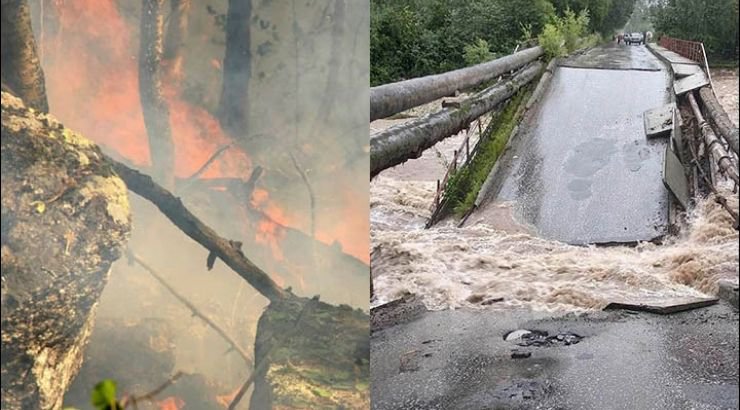(TMU) — The world’s oldest and deepest lake is facing a catastrophic threat as toxic mudflows resulting from intense flooding in Russia’s Siberia region threaten to inundate the body of water with chemicals.
Lake Baikal, which is located north of the Russia-Mongolian border deep in southern Siberia, was formed between 25 and 30 million years ago. With a maximum depth of 5,387 feet, the lake is the seventh-largest in the world by surface area.
However, the lake—which was declared a UNESCO World Heritage site in 1996—also contains over 20 percent of the planet’s unfrozen surface water, making it the largest freshwater lake on Earth by volume.
Now, environmentalists are warning that the lake is threatened by an impending ecological catastrophe, with the lake’s nearly 2,000 endemic species unique to the region facing a mortal threat from toxic conditions in the surrounding area.
The chief threat includes a flooding river in the town of Baikalsk, which lies on the banks of the lake, that has affected the Soviet-era Baikal Pulp and Paper Mill. The situation could lead to massive amounts of toxic waste containing chemicals like lignin washing into the pristine waters of Lake Baikal, the Siberian Times wrote.
The untreated waste stored at the site, which was closed in 2013, fills 13 storage ponds—including three that lie directly on the banks of the lake, three others to the east, and the remainder that lie slightly uphill, landslide expert Dave Petley said.
In total, the ponds contain about 6.2 million tons of untreated toxic waste.
In a blog post for the American Geophysical Union, Petley wrote that “the risks at this waste storage site are clearly unacceptably high, and the consequences of a major failure into Lake Baikal at Baikalsk would be truly catastrophic.”
Petley explained:
“The potential threat here lies in the setting of the waste ponds … the whole site is located on an active fan fed by the channel that emerges from the mountains. It is entirely reasonable, based upon the morphology, to assume that this channel is subject to flash floods and debris flows. In these systems, one would expect that high volume flows will overflow the channel and migrate across the fan. If so, the first waste pond in the staircase would be at high risk of being inundated.
… The potential consequences of such an event entering the highest waste storage pond should be clear—the likelihood of a very large debris flow breaching the first waste pond looks to be very high indeed. This pond would probably fail, inundating the next one downslope, and so on. Thus, it is entirely feasible that seven or more storage facilities could fail, releasing the waste into the lake. Of course, the three ponds to the east are also vulnerable.”
The flooding that began in the Siberian region of Irkutsk in June has directly affected about 11,000 homes, Radio Free Europe reports.
In the meantime, wildfires in Siberia have engulfed about 3 million hectares of mainly remote forest area—roughly the size of Belgium—according to authorities. The situation has prompted several regions to declare states of emergency.
In 2012, the Russian government allocated around $420 million to Lake Baikal cleanup efforts, but critics allege that the money was not spent properly.
The last disastrous mudflow into Lake Baikal took place in July 1971, and washed over 12 miles of the Trans-Siberian railway directly into the lake.






